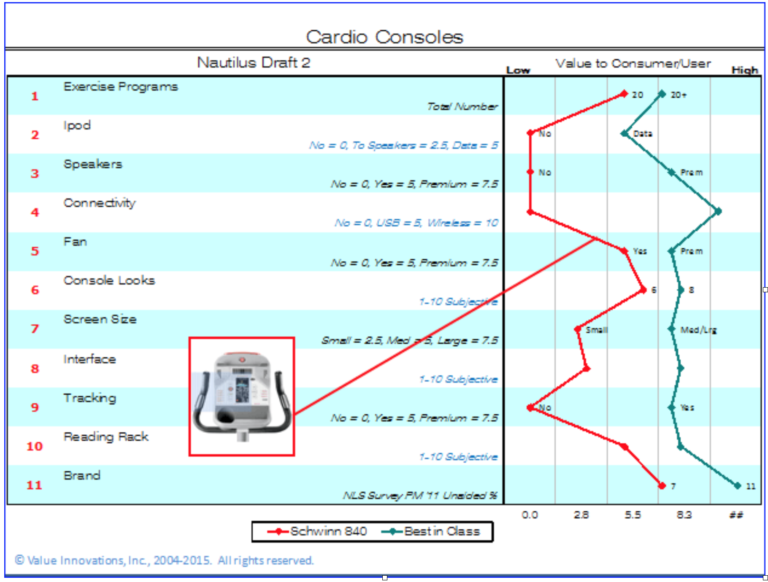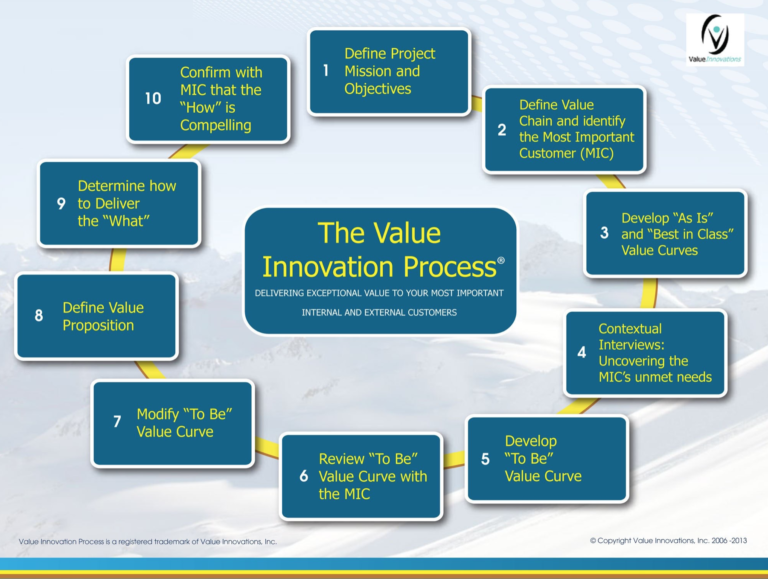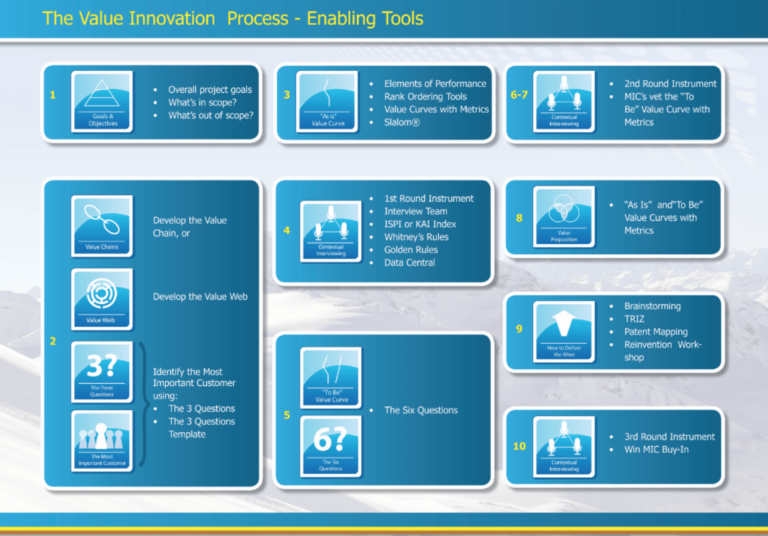How to deliver superior value to your clients? You should understand their needs better than anyone else, and then deliver on those needs.
Easy to say, but how do you do that? To most business people, understanding clients is a black box they call “market research”. They usually don’t know how to do it. And even when someone does it for them, how to be sure that results are valuable? Can we trust them? How to interpret them? How to communicate findings to a team to make a great offer?
I will try to help you by outlining steps from Value Innovations methodology and tools, that I find helpful in many problem-solving situations. I’ll show you a simple 5-step process that should answer most common questions and issues of understanding your clients and delivering superior value.
Who exactly do you need to understand?
This is the first crucial question, especially in B2B world. Different stakeholders have different needs and complex relations. And it can be really daunting to understand whose needs you should really understand. It is helpful to present those relations graphically, in a form of diagram. This way you can identify stakeholders and their flow of using the product, communication, and decision-making process.
Questions you should be asking are:
- Who uses the product and why?
- Who is a decision maker for its purchase?
- What criteria are used for decision making?
- Who influences the decision and how?
- What the communication and decision-making process currently looks like?
In Value Innovations terminology, the diagram of product and communication flow is called Value Chain or Value Web. Stakeholder you really need to understand is Most Important Customer (MIC). There is also a 3 question tool to identify the MIC, and you can find out more about it in the video at the end.
How to understand your Most Important Customer?
The answer is by conducting contextual interviews. This is a form of qualitative interviews, basically talking to clients in a semi-structured way. You seek to understand their situation. Their most important issues regarding your area of work (not just your product!). And all the issues, needs, wants and desires they encounter in everyday life. This process is very well explained in The Mom’s Test, a great book you should definitely check out.
Since the scope of this conversation is much wider than just your product, you can often uncover their unmet needs and issues invisible to your competitors. Every time we’ve done this for us and our clients, we uncovered valuable insights. Take a look at this video for an idea of what kind of insights you can expect.
Contextual interviews, like all qualitative research techniques, are conducted with a smaller number of people (a few dozens at best). Depending on the project, you might want to check your findings and use other tools with the larger sized audience as well.
How to understand the findings?
One of the most helpful tools to systematize, prioritize and understand the results of client interviews is called Value Curves With Metrics. Value Curves, as a business tool, were mentioned for the first time in one of the most influential business books of 21st century, Blue Ocean Strategy by W. Chan Kim. The book explains how to move from a bloody red ocean full of fierce competition to the blue ocean where you are differentiated and can achieve growth and healthy margins. Value Curves With Metrics is enhanced version of Strategy Canvas tool from the book. With added prioritization and metrics to help us better understand customer needs.

Example of Value Curves With Metrics
The tool consists of two parts: the left-hand side contains Elements of Performance that are important to MIC’s. The right-hand side contains scales (i.e. 1-10 scale) for every EoP. Here you can put a mark on the scale based on value delivered by your product (if it exists) and your competitors. When you connect those marks, you get the Value Curves for your competitors’ offerings. And, already, you can draw many conclusions out of it.
You can also use Best In Class curve to connect best elements of multiple competitors. Value Curves With Metrics help us better understand, prioritize and most importantly, communicate what should be done to deliver superior value. Using To Be Value Curve is a great tool for project management and communication of goals among team members.
Please note that we’re still talking about WHAT should be delivered and not about HOW to deliver it.
Did we get it right?
Now that we have a good understanding and graphic representation of insights, we should check with those same clients if we have understood them correctly. We can schedule the 2nd round of interviews. Show them Value Curves we have created and ask for their critique. All this to make sure we got everything right. So we can move on to the next step.
HOW to deliver the WHAT?
Only when you know WHAT you want to deliver, you can proceed to idea-generating techniques (like Brainstorming or TRIZ) in order to find the best creative solution to the problem at hand.
If you do all previous steps right, the solution becomes obvious. This often happens and it is a good sign! Great solutions are almost always obvious in retrospect but seldom seen while doing business as usual. It is also often a good idea to check the proposed solution with clients before investing resources in production. Just to make sure you’re still on a good path.
When done correctly, Value Innovation process can deliver magnificent results. It helped global companies like P&G and Chevron to earn billions of dollars. It fostered the creation of superstar products like Sensodyne Repair&Protect toothpaste and also provide value for small private companies and startups in small markets much like Serbian.
The whole process has ten steps:

and has a set of enabling tools:

Conclusion
The main advantage of Value Innovation process is in its versatility and flexibility. This and the fact same process and tools can be used in many problem-solving situations, internal and external, in creation or optimization of new products, services, processes etc. They can be used by any organization, of any size, on any market.
For a more detailed explanation and a great case study of how Samsung Electronics got to dominate TV sets market, watch THIS VIDEO – I promise you’ll enjoy it!
Also, I would love to hear your experiences on this subject. So, feel free to comment and ask questions in the comments section below.



